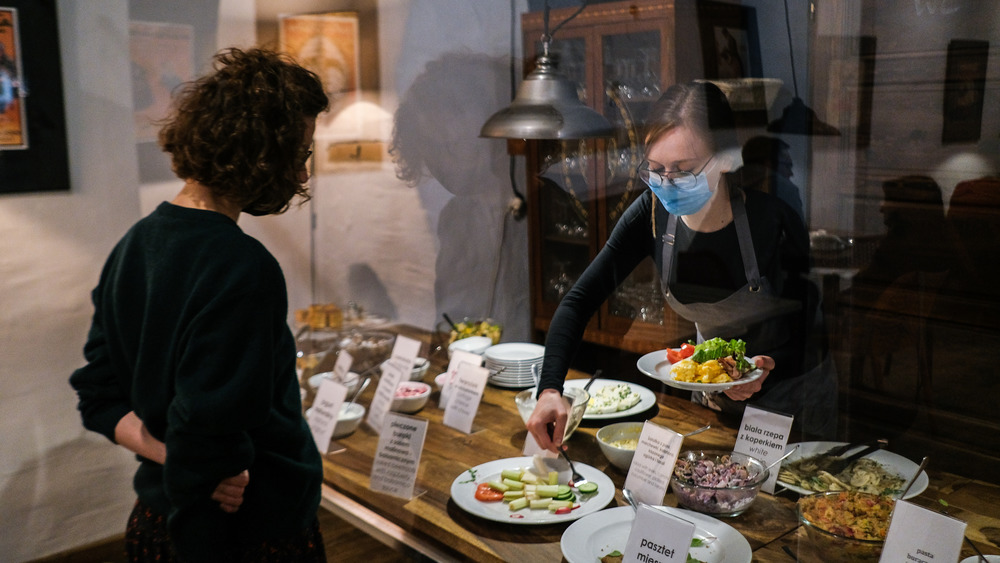How Protective Sneeze Guards Really Are Against COVID-19
A sneeze guard is a protective barrier made of acrylic or plexiglass that goes in between coworkers or customers and employees and prevents viruses or bacterial infections from spreading. The sneeze guard blocks droplets from a person's mouth or nose, which hit the sneeze guard instead of the person they are speaking to. Sneeze guards have been in high demand since the COVID-19 pandemic started. They have been put up in grocery stores, pharmacies, hospitals, banks, doctor's offices, gas stations, gyms, public transportation, and schools (via Quality Logo Products).
These sneeze guards are definitely playing a role in helping to slow the spread of COVID-19 because they block those droplets from someone talking, coughing, or sneezing, according to the CDC. These droplets are the primary way the virus spreads, especially when someone who is infected has yet to show symptoms or never show any coronavirus symptoms. Those people may not know they have it and are more likely to be out and about thinking they are not sick. The CDC states that employers should be putting up sneeze guards between employees and customers, and many businesses and organizations are adhering to this recommendation.
Keep in mind, though, that just because there are sneeze guards present, that doesn't mean you won't be exposed to or contract COVID-19 — it's just another added layer of protection in addition to mask-wearing, hand washing, social distancing, and staying home when possible.
How sneeze guards are being used
Schools with in-person classes are using sneeze guards to help stop the coronavirus spread between students and staff. Many schools have sneeze guards up on kids' desks in the front and on the sides, and in front of staff desks — principal, reception, counseling, and others.
Gyms are using sneeze guards at each exercise machine and the check-in desk. Most gyms were forced to shut down when the coronavirus pandemic hit, but now that they are reopening, they are using sneeze guards and other measures to prevent the spread of COVID-19. Learn how to stay safe while working out indoors.
Some gas stations use small sneeze guards to cover the card readers where you pay with your debit or credit card. You can reach under the sneeze guard to enter your PIN, and the barrier reduces the amount of droplets from getting onto the card reader. People are still touching it, which means if they have the virus on their hands and touch the card reader, they could pass it on to you. So, make sure you're using a hand sanitizer after touching the card reader.
Public transportation is using sneeze guards between passengers and drivers. For example, they are being used in taxis, Ubers, Lifts, and buses (via Quality Logo Products).
Restaurants are also using sneeze guards between the host and customers, and between people eating at the same table.


